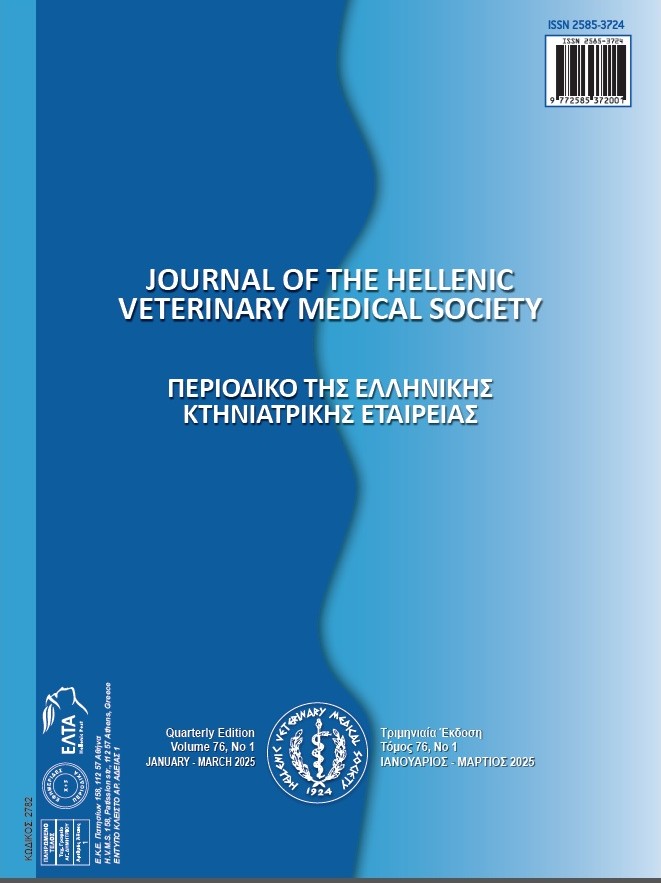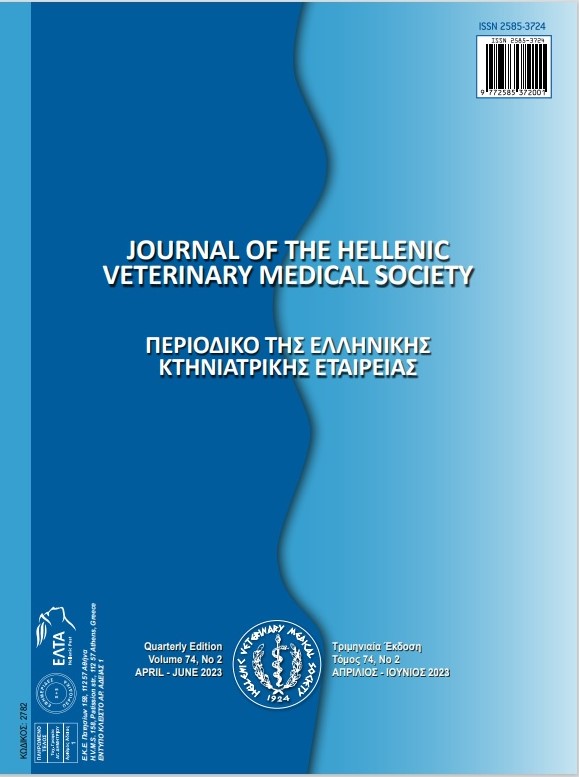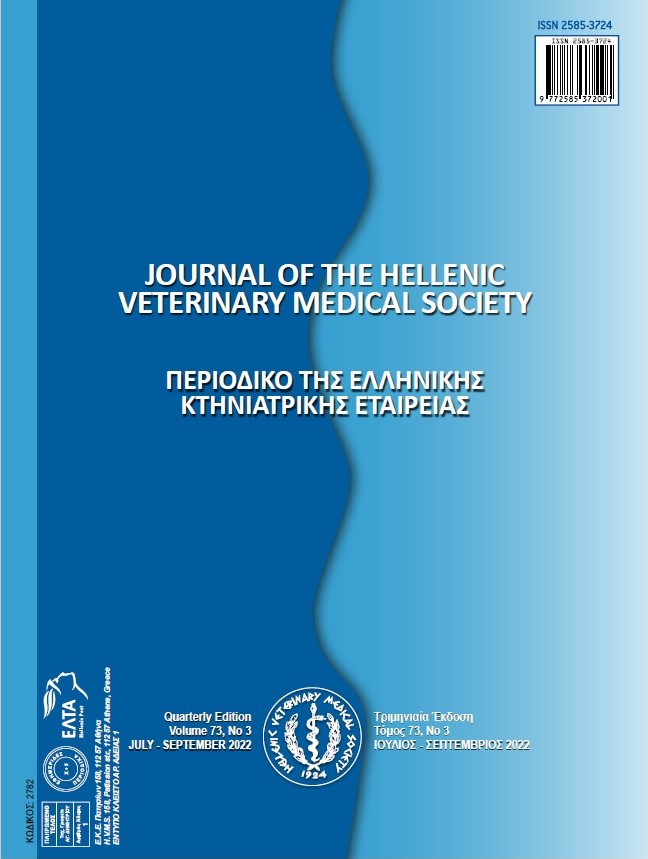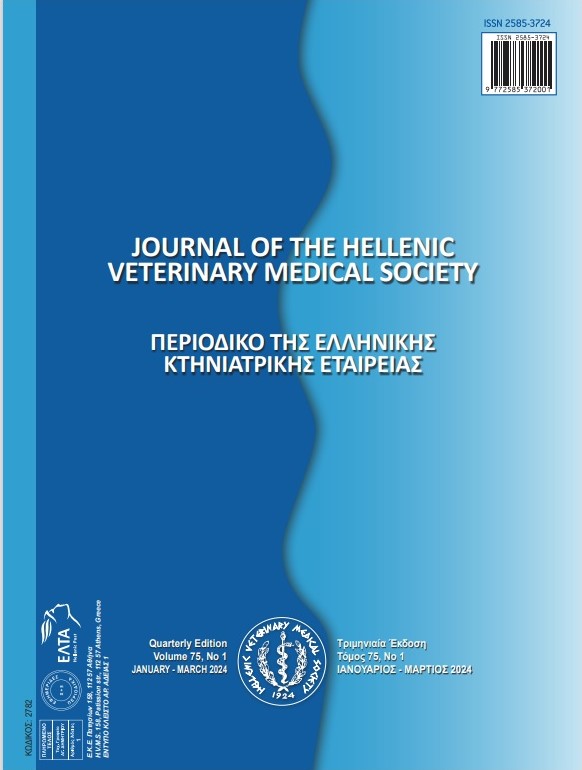Exploring the FoxP3+ Lymphocytes and Their Correlation with VEGF in Canine Histiocytic Tumors

Περίληψη
Histiocytic proliferative diseases in dogs include reactive diseases such as cutaneous histiocytosis and systemic histiocytosis and neoplastic diseases such as cutaneous histiocytoma, histiocytic sarcoma, and disseminated histiocytic sarcoma. The aim of our study was to investigate the intensity of VEGF staining with FoxP3-positive T lymphocytes in various histiocytic diseases in dogs. The study evaluated 23 cases diagnosed with histiocytic tumors. Immunostaining with Iba-1, E-cadherin, and CD3 antibodies was performed for differential diagnosis. Because of strong CD3 positivity, lymphoma was diagnosed in 2 cases. The diagnosis of histiocytic tumor was confirmed in 12 cases with intense Iba-1 positivity. In the other 9 cases, Iba-1-positive histiocytic cells were detected in the tumor tissue. Histopathologic examination of the 12 Iba-1-positive cases revealed that 4 cases were cutaneous histiocytomas, 3 cases were cutaneous histiocytosis, and 5 cases were histiocytic sarcomas (1 hemophagocytic histiocytic sarcoma). Mild E-cadherin positivity was detected in only one cutaneous histiocytoma and one histiocytic sarcoma. CD3- and FoxP3-positive T lymphocytes were counted and evaluated in 12 Iba-1-positive cases. In addition, VEGF staining revealed different degrees of positivity. Statistical analyzes revealed that there was a significant increase in CD3 positivity in histiocytic sarcoma and cutaneous histiocytosis cases compared with cutaneous histiocytoma cases in the group comparison. According to the correlation results of CD3, FoxP3, and VEGF levels, only a moderate negative correlation was found between FoxP3 and VEGF. According to the findings, increasing the amount of FoxP3-positive Tregs in canine histiocytic tumors may negatively correlate with VEGF-mediated angiogenesis.
Λεπτομέρειες άρθρου
- Πώς να δημιουργήσετε Αναφορές
-
Kaya, A., & Ipek, V. (2025). Exploring the FoxP3+ Lymphocytes and Their Correlation with VEGF in Canine Histiocytic Tumors. Περιοδικό της Ελληνικής Κτηνιατρικής Εταιρείας, 76(1), 8757–8766. https://doi.org/10.12681/jhvms.37565 (Original work published 19 Απρίλιος 2025)
- Τεύχος
- Τόμ. 76 Αρ. 1 (2025)
- Ενότητα
- Research Articles

Αυτή η εργασία είναι αδειοδοτημένη υπό το CC Αναφορά Δημιουργού – Μη Εμπορική Χρήση 4.0.
Οι συγγραφείς των άρθρων που δημοσιεύονται στο περιοδικό διατηρούν τα δικαιώματα πνευματικής ιδιοκτησίας επί των άρθρων τους, δίνοντας στο περιοδικό το δικαίωμα της πρώτης δημοσίευσης.
Άρθρα που δημοσιεύονται στο περιοδικό διατίθενται με άδεια Creative Commons 4.0 Non Commercial και σύμφωνα με την άδεια μπορούν να χρησιμοποιούνται ελεύθερα, με αναφορά στο/στη συγγραφέα και στην πρώτη δημοσίευση για μη κερδοσκοπικούς σκοπούς.
Οι συγγραφείς μπορούν να καταθέσουν το άρθρο σε ιδρυματικό ή άλλο αποθετήριο ή/και να το δημοσιεύσουν σε άλλη έκδοση, με υποχρεωτική την αναφορά πρώτης δημοσίευσης στο J Hellenic Vet Med Soc
Οι συγγραφείς ενθαρρύνονται να καταθέσουν σε αποθετήριο ή να δημοσιεύσουν την εργασία τους στο διαδίκτυο πριν ή κατά τη διαδικασία υποβολής και αξιολόγησής της.





